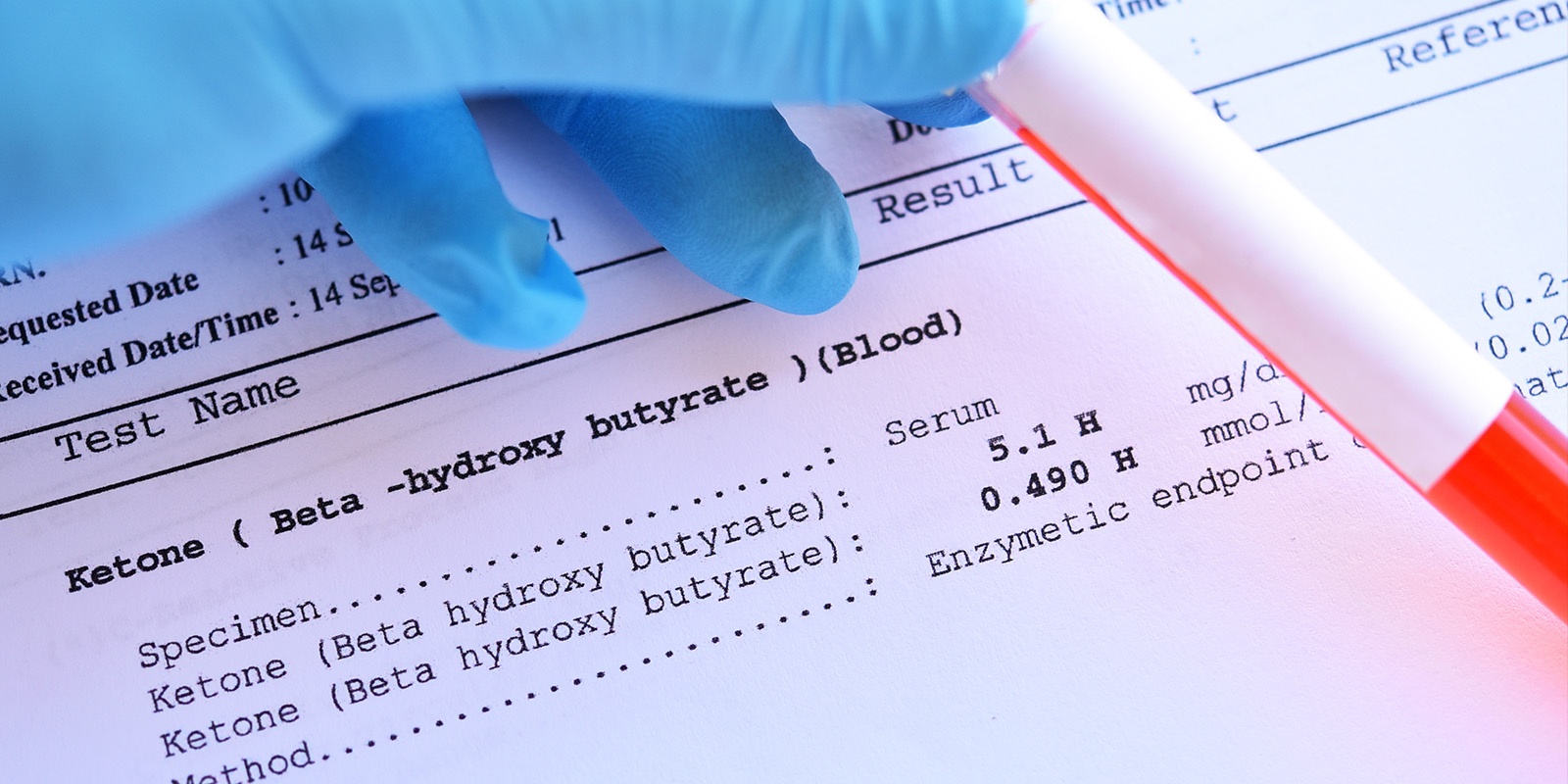What’s the difference between ketosis and ketoacidosis? Both words are similar and involve ketone production; however, the likeness stops there. Ketosis is a natural metabolic process where your body uses fat as its main energy source, whereas ketoacidosis is a dangerous medical condition. Here we explain the details to eliminate any confusion.
What is Ketosis?
Ketosis is a natural metabolic state that occurs when your body doesn’t have enough carbohydrates to use for energy and begins breaking down fat instead. This process produces ketones, which serve as an alternative fuel source.
To enter nutritional ketosis, you follow a very low-carbohydrate, moderate-protein, higher-fat diet. When carb intake is significantly reduced, your body shifts from relying on glucose to using ketones for energy. This shift can offer a variety of health benefits.
Signs of Ketosis
As your body adapts to a high-fat ketogenic diet, there are several early signs or temporary side effects that may indicate you’re entering and maintaining a state of ketosis, including:
- Keto breath: slightly metallic or fruity breath from the initial rise in ketones.
- Weight loss: initially, mainly water weight.
- Increased levels of ketones (beta-hydroxybutyrate) in the blood, which is easily measured. Nutritional ketosis, also known as euketonemia, is defined by beta-hydroxybutyrate levels ranging from 0.5 to 5.0 mmol/L.
- Keto flu symptoms: Temporary, flu-like symptoms many people experience as their body adjusts to being in ketosis, including fatigue, headache, and muscle cramps.
- Decreased athletic performance: This is temporary as your body retrains itself to use ketones for energy rather than glucose. Once you adjust to a keto lifestyle, typically within a few days to a week, keto flu symptoms usually subside. Now that you understand ketosis, let’s explore ketoacidosis.
What is Ketoacidosis?
Ketoacidosis –– most often diabetic ketoacidosis (DKA) —is a serious, life-threatening condition primarily seen in people with poorly controlled type 1 diabetes. It can also occur, though less commonly, in individuals with type 2 diabetes, particularly those taking a class of medications called SGLT2 inhibitors. DKA happens when blood sugar and ketone levels become dangerously high at the same time, disrupting normal organ function, including that of the liver and kidneys.
The most common cause of DKA is insufficient insulin in people with type 1 diabetes, often due to missed doses or illness. Other potential triggers include infections, physical or emotional stress, and in some cases, excessive alcohol or drug use.
Prompt medical treatment for DKA is critical. However, for people without diabetes, or for those with well-controlled type 2 diabetes, developing ketoacidosis is extremely unlikely. If you have type 1 diabetes and are considering a ketogenic diet, it’s essential to work closely with your healthcare provider to safely adjust insulin and monitor blood glucose and ketone levels, minimizing any risk of serious complications.
Warning Signs of DKA:
Following are common warning signs of diabetic ketoacidosis:
- Blood glucose above 240 mg/dL (i.e. extra high blood-glucose levels)
Note: Although less common, ketoacidosis can also occur in a setting of normal or slightly elevated blood glucose levels. This is known as euglycemic DKA. People with diabetes who take SGLT2 inhibitors are at higher risk of euglycemic DKA. - Symptoms of high blood glucose: dry mouth, thirst, and frequent urination
- Beta-hydroxybutyrate values above 5 mmol/L, when other symptoms are present
- Vomiting and upset stomach
- Very strong acetone smell on breath
- Severe fatigue and drowsiness
- Confusion
- Difficulty breathing or shallow breathing
If you have type 1 or type 2 diabetes and experience any of these symptoms, seek immediate medical care, as they may indicate ketoacidosis. While this condition is most commonly associated with type 1 diabetes, it can occur, although rarely, in individuals with type 2 diabetes.
The Final Word
It’s important to distinguish between nutritional ketosis and ketoacidosis, as they are very different states. Ketosis is a natural, beneficial metabolic process that occurs when your body uses fat as its main fuel source. By contrast, diabetic ketoacidosis is a serious and potentially life-threatening complication that occurs mainly in people with type 1 diabetes. If you have type 1 or type 2 diabetes and are considering a ketogenic diet, be sure to work closely with your healthcare provider to ensure it’s done safely and appropriately for your individual needs.



